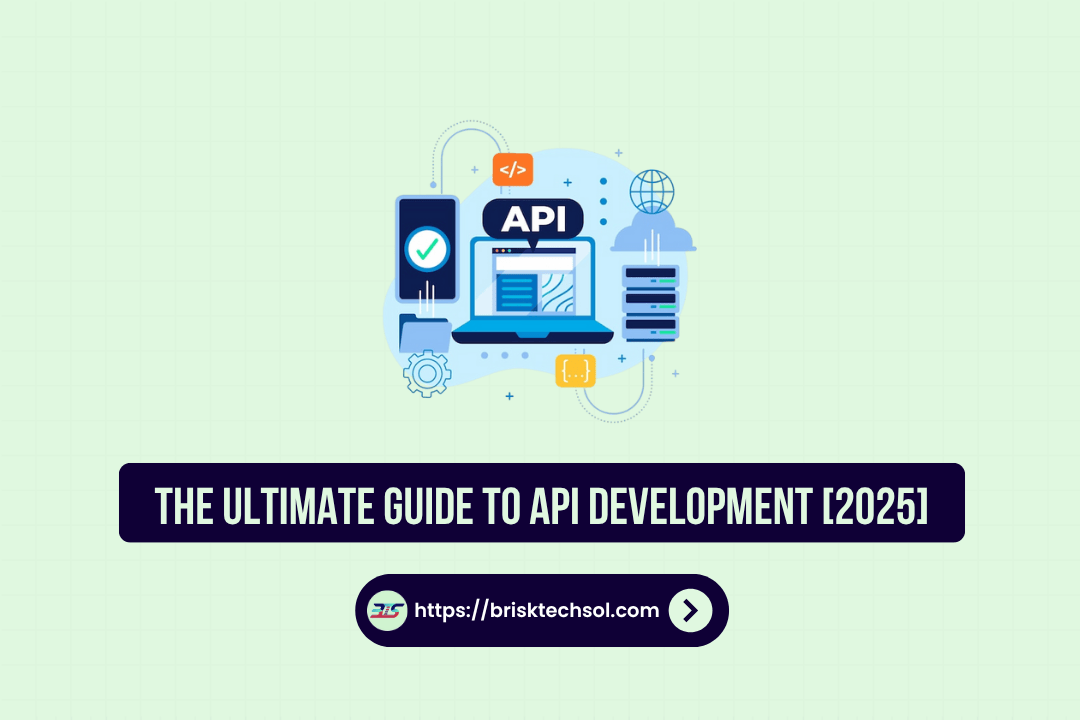This comprehensive guide simplifies installing Google Tag Manager in Webflow. We break down the essential steps in a friendly, easy-to-follow style so you can quickly boost your site’s tracking and analytics, ensuring smoother performance and smarter marketing decisions.
What is GTM and Webflow?
Google Tag Manager (GTM) is a free, robust tag management system that centralizes your website’s marketing and analytics tags. By embedding a single container snippet into your site, GTM allows you to add, modify, and remove various tracking codes from Google Analytics and conversion pixels to remarketing tags—without altering your site’s source code. This flexibility minimizes errors and streamlines the process of keeping your website’s data collection up-to-date.
In parallel, Webflow is a modern web design and development platform that empowers designers and developers to create responsive, visually appealing websites without extensive coding. With its powerful CMS and hosting capabilities, Webflow produces clean, semantic code and offers a highly customizable environment. This makes it ideal for those looking to merge creative design with robust functionality.
Integrating GTM with Webflow offers several advantages. First, it centralizes all tracking and marketing tags into one manageable interface. Rather than editing multiple pages or source files, you can update your tags through GTM’s dashboard, which reduces the risk of coding errors. Industry reports show that over 65% of digital marketers experience improved data accuracy and enhanced site performance once they implement a tag management system like GTM.
Additionally, this integration enables real-time monitoring of user behavior. Whether you’re tracking page views, button clicks, or form submissions, GTM provides instant insights into how visitors interact with your site. This data is crucial for fine-tuning your digital marketing strategies and ensuring that every campaign is informed by accurate analytics.
By understanding the unique benefits and functions of both GTM and Webflow, you lay the groundwork for a smooth integration process. Whether you’re a seasoned marketer or a beginner, mastering this combination will help you boost efficiency, improve user tracking, and ultimately drive higher ROI through data-informed decisions. In the following sections, we’ll dive deeper into why this integration matters and provide a comprehensive, step-by-step installation guide.
Why Use GTM with Webflow?
The synergy between Google Tag Manager and Webflow transforms how websites handle digital marketing and analytics. One of the primary benefits of installing GTM in Webflow is the ability to manage all your tracking codes from a single dashboard. This eliminates the need for repetitive code changes on your live site, reducing development time and minimizing the possibility of errors.
For marketers, GTM is invaluable because it enables quick adjustments to campaigns and immediate updates to tracking strategies. Whether you need to modify conversion pixels, update remarketing tags, or add new analytics tracking codes, GTM allows you to do this in real time. This agility is particularly beneficial in today’s fast-paced digital environment, where user behavior and market trends can change rapidly.
Moreover, integrating GTM with Webflow enhances your ability to analyze visitor data. With the installation complete, you can track detailed metrics such as session duration, click-through rates, bounce rates, and conversion events—all without disturbing your site’s design. These insights allow you to optimize user experiences and refine your digital marketing strategy based on real-world performance data.
Another compelling reason to integrate GTM in Webflow is the streamlined workflow it creates. Instead of juggling multiple platforms or manually editing code, you have a centralized system that handles all your tag management needs. This leads to improved website speed, fewer technical issues, and a better overall user experience.
Step-by-Step Guide to Installing GTM in Webflow
Pre-requisites & Account Setup
Before you begin, it’s essential to ensure you have everything in place for a smooth installation of GTM in Webflow. First, create a Google account if you don’t already have one. Then, log in to Google Tag Manager and set up a new account for your business or website. At the same time, ensure that you have administrative access to your Webflow project and create a backup of your site’s current settings. This backup is crucial, as it provides a fallback option should you need to revert any changes.
Additionally, check that your browser settings are optimized for this process. Disable any ad blockers or script-blocking extensions that might interfere with GTM’s preview mode. Familiarize yourself with both GTM’s documentation and Webflow’s guidelines on custom code. Understanding these fundamentals will help prevent common pitfalls during the installation process.
With these pre-requisites in place, you’re ready to create your GTM container a central hub for managing all your marketing tags. This container will store all the tracking codes you deploy, ensuring that any future updates or modifications can be handled through GTM’s dashboard rather than directly editing your site’s code.
Creating a GTM Account & Container
Once you’re logged into Google Tag Manager, click on the “Create Account” button. Enter your account name, which is typically your company or website name, and proceed to set up your container. Name your container to correspond with your Webflow project and choose “Web” as the target platform. After accepting the Terms of Service, your new GTM account and container will be created.
GTM then provides you with a unique code snippet that consists of two parts. The first part of the snippet is meant to be placed in the head section of your website’s HTML, while the second part should be placed immediately after the opening of the body tag. It is critical to copy these code snippets accurately; any misplacement can result in your tags not firing correctly.
This container serves as the centralized control center from which you manage your tags, triggers, and variables. For security and efficiency, you can set user permissions within the container, ensuring that only authorized personnel can modify your tag settings. Properly configuring user permissions not only protects your site’s integrity but also ensures a systematic approach to tag management.
Before proceeding further, double-check that the container’s unique ID is correctly recorded—it’s an essential reference for troubleshooting any issues that might arise later in the installation process. Once your container is set up and you’ve copied the GTM code snippets, you’re ready to integrate GTM with your Webflow site by inserting the provided code.
Adding GTM Code to Webflow
After obtaining your GTM code snippets, log in to your Webflow dashboard and select the project you want to update. Navigate to your project’s settings, and then locate the “Custom Code” section. In the “Head Code” field, paste the first portion of your GTM snippet. Make sure the code is placed as close to the opening <head> tag as possible for optimal performance.
Next, scroll down to the “Footer Code” section. Here, paste the second portion of your GTM snippet immediately before the closing </body> tag. Placing the code in this location ensures that the GTM script executes after your site’s main content has loaded, which helps to maintain fast page load times and a smooth user experience.
Once you’ve inserted both parts of the code, save your changes and publish your site. It’s a best practice to test these changes in a staging environment first, if possible. This precaution minimizes the risk of any disruptions on your live site. After publishing, open your site in a web browser and check that the GTM code is present by viewing the page source.
Below is a quick reference table summarizing the code placement steps:
| Step | Action |
|---|---|
| Pre-requisites | Create accounts, backup your Webflow project, disable interfering extensions |
| Create GTM Container | Set up GTM account, generate container, copy both code snippets |
| Insert Code in Head | Paste GTM head snippet in Webflow’s “Head Code” section |
| Insert Code in Footer | Paste GTM body snippet in Webflow’s “Footer Code” section |
| Publish & Verify | Save changes, publish site, and verify code placement via page source |
Following these precise steps guarantees that your GTM installation in Webflow is implemented correctly, ensuring reliable data collection and tracking.
Verifying the Installation
Once the GTM code is successfully integrated into your Webflow project, verifying its installation is the next critical step. Start by enabling GTM’s Preview mode through your GTM dashboard. With Preview mode activated, visit your published Webflow site. If the integration is correct, you will see a debug console at the bottom of your browser window. This console displays all active tags, triggers, and any data layers that are firing on your site.
If you do not see the debug console, it’s time to recheck your code placements. Use your browser’s developer tools to inspect the page’s source code. Ensure that both the head and footer GTM snippets are present and correctly positioned. In some cases, clearing your browser cache or temporarily disabling any remaining script blockers can resolve issues with the preview mode.
Verifying your installation is not only a troubleshooting step—it confirms that your site is now fully equipped to capture and analyze user data. This verification process lays the foundation for accurate tracking and reliable marketing insights, ensuring that every change you make in GTM will be reflected on your Webflow site.
Quick Table Summary of Steps
Below is a concise table summarizing the essential steps to install GTM in Webflow:
| Step Number | Description | Key Action |
|---|---|---|
| 1 | Pre-requisites | Create accounts, backup site, disable blockers |
| 2 | Create GTM Container | Generate container and copy GTM snippets |
| 3 | Insert GTM Code in Webflow | Paste code in Head and Footer sections |
| 4 | Publish & Verify | Publish your site and confirm installation via Preview |
| 5 | Troubleshoot & Optimize | Use developer tools, clear cache if needed |
This table serves as a quick reference for anyone looking to install GTM in Webflow, ensuring you follow each step methodically for a successful setup.
Troubleshooting, Common Issues, and Best Practices
While the process of installing GTM in Webflow is straightforward, you might occasionally encounter issues that require troubleshooting. One common problem is the GTM Preview mode not appearing on your site. This issue can often be attributed to caching problems, incorrect code placement, or even interference from browser extensions. Begin by verifying that both parts of the GTM snippet are correctly placed in the “Head Code” and “Footer Code” sections of your Webflow project. If the debug console remains hidden, try clearing your browser cache and temporarily disabling any ad blockers or script-blockers that might be interfering.
Another frequent challenge arises from conflicts with other custom scripts embedded in your Webflow site. Although Webflow generates clean, semantic code, additional third-party scripts can sometimes override or conflict with GTM functionalities. Regularly monitoring your site using browser developer tools or the Google Tag Assistant Chrome extension can help identify any errors or conflicts. Addressing these issues promptly will prevent disruptions in data tracking and maintain a smooth user experience.
Best practices for managing GTM in Webflow include organizing your tags, triggers, and variables into clearly defined groups. Document every change you make so that you can easily troubleshoot and update tags in the future. It is also highly recommended to test all new tags in a staging environment before pushing them live. This testing phase allows you to ensure that every new tag functions as intended without causing unexpected issues on your production site.
Integrating Webflow’s native analytics with GTM data offers a dual-layered insight into user behavior. This approach not only enhances your tracking capabilities but also provides a more comprehensive view of how visitors interact with your site. Stay informed about updates from both GTM and Webflow, as both platforms continuously evolve and introduce new features that can further optimize your site’s performance.
Conclusion
Integrating Google Tag Manager with Webflow changes your website’s analytics and tracking capabilities. By following our simple guide, you ensure seamless installation, accurate data capture, and easy management of tags. This streamlined approach empowers you to optimize user experiences, drive smarter marketing decisions, and maintain reliable performance setting the stage for sustained digital success and continuous improvement.
FAQs
1. What is GTM and why integrate it with Webflow?
GTM is a free tool for managing website tags without constant code changes. Integrating it with Webflow simplifies updates and reduces errors, making your tracking more efficient.
2. How do I add the GTM code snippet to my Webflow site?
Log into your Webflow project, navigate to Project Settings > Custom Code, and paste the GTM snippet into the Head and Footer sections. Then, publish your site.
3. How can I verify that GTM is working correctly?
Enable GTM’s Preview mode and visit your site. If the debug console appears showing active tags, the installation is successful. Otherwise, check your code placement and clear your cache.
4. What common issues might I face during installation?
You might encounter caching problems, ad blockers interfering, or misplacement of code. Ensure the GTM snippet is correctly placed in both head and footer, and clear your cache if needed.
5. What are the best practices for managing GTM tags in Webflow?
Organize tags with clear names, test changes in a staging environment, and regularly audit your tags to remove outdated ones. This keeps your site running smoothly and data accurate.









